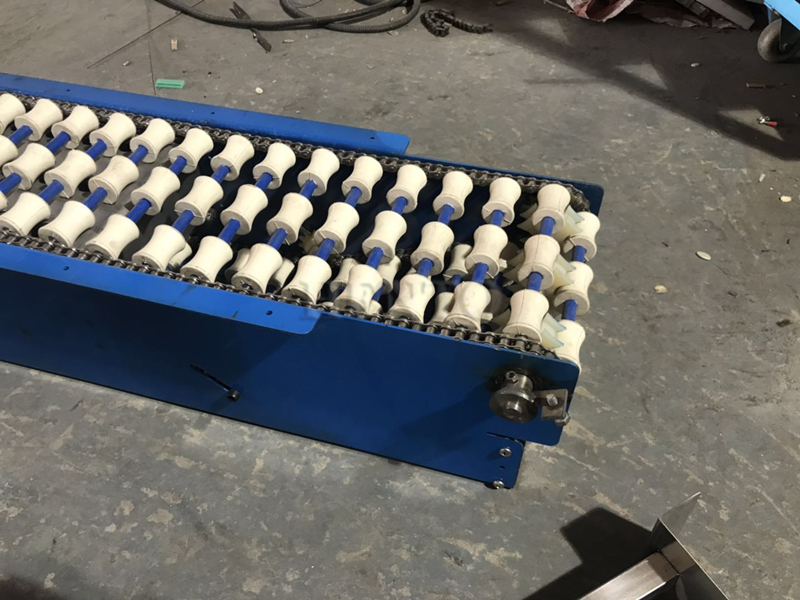livestock feed pellet machine
Nov . 20, 2024 23:50 Back to list
livestock feed pellet machine
The Essential Role of Livestock Feed Pellet Machines in Modern Agriculture
In the realm of modern agriculture, the efficiency and productivity of livestock farming are paramount. One of the key innovations that have revolutionized the industry is the livestock feed pellet machine. This essential equipment not only enhances the quality of animal feed but also simplifies the feeding process for farmers, thereby improving overall productivity.
At its core, a livestock feed pellet machine is designed to compress a mixture of raw materials into pellets. The process involves grinding, mixing, and then pelleting the feed, which ensures uniformity in size, density, and nutritional content. This uniformity is crucial as it allows livestock to consume the feed more efficiently, leading to better growth rates and healthy animals.
One of the most significant advantages of using a feed pellet machine is the improved digestibility of the feed. Traditional loose feed often results in wastage, as animals may selectively eat their preferred ingredients, leaving behind less palatable components. Pelleted feed addresses this issue by presenting a complete nutrition profile in a single, cohesive form. The process of pelleting not only breaks down the raw materials but also gelatinizes starches and reduces anti-nutritional factors. As a result, livestock can absorb nutrients more effectively, ensuring optimal growth and development.
Another critical benefit of feed pelleting is the reduction of feed spoilage and waste. Pellets are more stable during storage and transport compared to loose feed, significantly decreasing the risk of spoilage caused by moisture or pests. This stability is essential for farmers aiming to maintain a consistent supply of quality feed for their livestock. Furthermore, with reduced waste, farmers can manage their resources more efficiently, leading to increased profitability.
livestock feed pellet machine

The economic advantages of investing in a livestock feed pellet machine cannot be overstated. While the initial cost may seem high, the long-term savings and productivity gains justify this investment. Pelleting allows for the utilization of various feed ingredients, including by-products from other agricultural processes, which may be less expensive. This flexibility in ingredient sourcing can lead to lower feed costs, as well as the opportunity to utilize local materials that may otherwise go to waste.
Moreover, the ability to produce customized feed formulations tailored to the specific needs of different livestock species enhances farm productivity. For instance, dairy cows, poultry, and pigs have distinct nutritional requirements. A pellet machine enables farmers to experiment with different mixtures and formulations, optimizing the diet for each type of animal, thereby promoting better health and productivity.
In recent years, advancements in technology have further improved the efficiency of livestock feed pellet machines. Modern machines are equipped with features that enhance automation, such as programmable settings that allow for precise control of the pelleting process. Additionally, many machines are designed to be energy-efficient and require less maintenance, thereby reducing operational costs.
Furthermore, the movement towards sustainability in agriculture has spurred interest in the use of feed pellet machines. By promoting the use of organic and locally-sourced materials, farmers can reduce their carbon footprint while producing high-quality feed. This not only benefits the environment but also appeals to an increasingly eco-conscious consumer base.
In conclusion, livestock feed pellet machines have become a cornerstone of modern farming practice. Their ability to improve feed quality, reduce waste, and enhance productivity makes them an invaluable asset for livestock farmers. As the agricultural landscape continues to evolve, the importance of such technologies will only grow, ensuring that farmers can meet the rising demands for animal protein while adhering to sustainable practices. Investing in a feed pellet machine is not just a choice; it is a step towards a more efficient, productive, and sustainable agricultural future.
-
Automatic Feeding Line System - Anping County Yize Metal Products Co., Ltd.|Pan Feeder Nipple Drinker,Broiler Farming
NewsJul.30,2025
-
Automatic Feeding Line System Pan Feeder Nipple Drinker-Anping County Yize Metal Products Co., Ltd.
NewsJul.30,2025
-
Automatic Feeding Line System-Anping County Yize Metal Products Co., Ltd.|Durable Construction&Easy Maintenance
NewsJul.30,2025
-
Automatic Feeding Line System-Anping County Yize Metal Products Co., Ltd.|Pan Feeder Nipple Drinker&Durable Poultry Farming Solution
NewsJul.30,2025
-
Automatic Feeding Line System Pan Feeder Nipple Drinker|Anping County Yize Metal Products Co., Ltd.
NewsJul.29,2025
-
Automatic Feeding Line System-Pan Feeder Nipple Drinker|Anping County Yize Metal Products Co., Ltd.
NewsJul.29,2025






